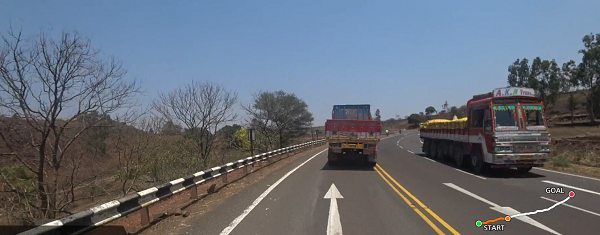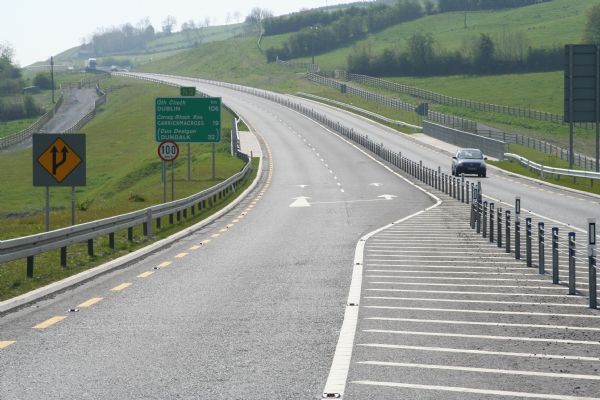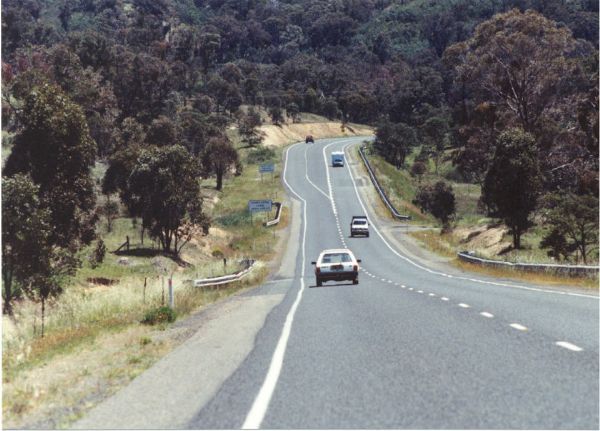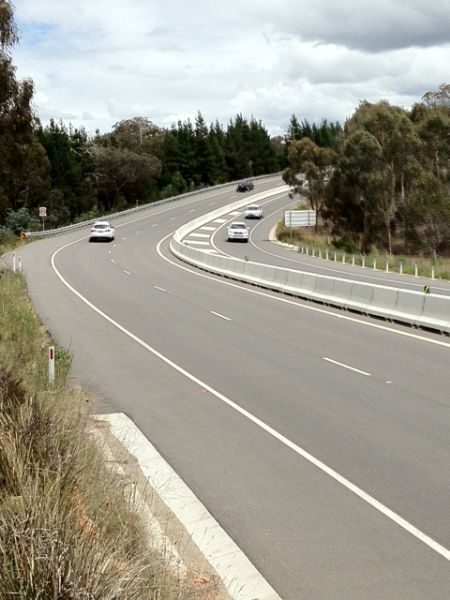





Overtaking Lane and 2+1 Road
On high-speed roads, head-on and loss of control crashes can occur when drivers try to overtake other vehicles. Overtaking lanes provide a safe opportunity for one direction of traffic to overtake.
Traffic congestion, especially in built-up areas of low and middle income countries, is recognized as a challenge. Building additional lanes to increase road capacity is costly and often does not lead to long-term improvements in congestion as numbers of vehicles grow. Multimodal transport and land-use planning is essential part of management of congestion.
However, on higher-speed roads outside built-up areas, overtaking lanes can be added to provide safe opportunities for overtaking. If provided with regular safe opportunities for overtaking, drivers and riders will be less likely to make dangerous overtaking attempts. Overtaking lanes are generally used on higher-speed arterial roads where there is a mixture of slow and faster moving traffic. In mountainous terrain some vehicles (especially heavy vehicles) will be limited to low speeds. An extra lane on steep descents (descending lanes) or up-hill sections (crawler or climbing lanes) can be used by other vehicles to pass safely. Climbing lanes are suitable for road sections with gentle horizontal alignment and good visibility.
Opposing traffic is at minimum separated by a double solid centerline
marking. Increased protection may be achieved with the use of wide centreline, longitudinal rumble strip, median and/or median safety barrier. If a median safety barrier is provided, the single downhill lane will need to have additional clear width.
The 2+1 road is a special form of overtaking
lane layout pioneered in Sweden. A 2+1 road consists of two lanes in one
direction and one lane in the other, alternating every few kilometres, and
usually separated with a flexible
median safety barrier. This arrangement has proven highly
effective in reducing head-on crash risk and has since been adopted in many
other countries.
A high degree of caution should be used in planning and designing overtaking lanes where pedestrians and bicyclists cross the road, and near intersections. The improved flow created by the additional lane is likely to lead to higher speeds and each additional lane added to a road increases risk for pedestrians and bicyclists crossing the road.
If the length of uphill gradient is limited and the alignment is favourable, an overtaking lane for climbing lane should be continuous. In other cases, discrete climbing lanes may be sufficient given overall consideration of traffic volume, topography and economics. Such discrete sections are generally 400m or more in length excluding tapers and buffer areas. Vertical alignment may need to be well-coordinated with tunnels to avoid escalated cost for an additional tunnel lane. It is generally acceptable to reduce the paved shoulder width to 1.0m and exceptionally 0.5m along climbing lanes. Emergency parking laybys should be provided at a maximum interval of 1 km.
Another option is slow vehicle turnout lanes. These are short sections of paved shoulder or added lane where slow vehicles can pull over safely and be overtaken. Slow vehicle turnouts may be more appropriate than overtaking lanes where traffic volumes are low or where an overtaking lane would be too costly.
- Reduced risk of crashes related to overtaking such as head-on crashes
- Extra clear zone (area free of roadside hazards)
- The start and end points of additional lanes must be designed carefully. For example, sight distance must be suitable for the speed of traffic.
- Signs telling drivers when an overtaking lane is ahead will reduce the likelihood of them overtaking in less safe areas.
- Overtaking lanes should not be installed at sites which include significant intersections or many access points, or pedestrian crossings. Consideration may be given to terminating the overtaking lane ahead or providing traffic signals..
- Vehicles travelling in the opposite direction to the overtaking lane must be discouraged from also using this lane. Physical barriers may be required.
- At the end of an overtaking lane, overtaking traffic should merge back to the slower lane with a taper. A buffer area on hatched markings should be provided beyond the end.
- On divided roads climbing lanes should be continuous as far as possible. On undivided roads, discrete climbing lanes may be sufficient given overall consideration of traffic volume, topography and economics. Such discrete sections are generally 400m or more in length excluding tapers and buffer areas.
The Star Rating Demonstrator is a freely available tool with the iRAP online software, ViDA. With the Star Rating Demonstrator, it is possible to explore the impact that this Safer Roads Treatment has on risk.
Treatment Summary
Costs | High |
Treatment life | 10 years - 20 years |
Potential casualty reduction | 25-40% |
Case Studies
Related Images
 State highway in India with 2+1 lane configuration and roadside safety barrier. Image credit: iRAP
State highway in India with 2+1 lane configuration and roadside safety barrier. Image credit: iRAP A divided road in Ireland with 2+1 lane configuration and wire-rope median barrier. Image credit: EuroRAP
A divided road in Ireland with 2+1 lane configuration and wire-rope median barrier. Image credit: EuroRAP Additional lane. Image credit: ARRB
Additional lane. Image credit: ARRB Roadside and median safety barriers on a curve in Australia. Image credit: Greg Smith
Roadside and median safety barriers on a curve in Australia. Image credit: Greg Smith










